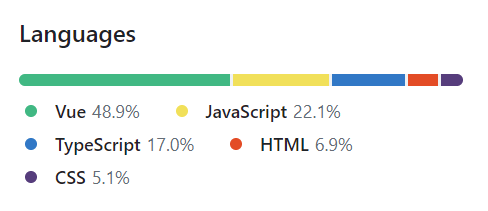How It Works
Langits shows the programming languages that make up the GitHub repositories of a given GitHub user. The languages are broken down into percentages based on their propo rtion throughout all of the user's GitHub repositories. The app queries GitHub's GraphQL API to obtain the data for the given user.
API Limitations
The GitHub GraphQL API limits the request query to 100 repositories. This is the value used by Langits; the visualization above is only representative of the given user's latest 100 repositories ordered by push time. Since GitHub allows users to have unlimited repos, this could skew and change the meaning of the data! One should keep this in the back of their mind when querying a username, and one may also check the user's GitHub page if they see that 100 repositories are visualized here.
The API also limits the number of programming languages returned by the request to 100, and this is also the value used by Langits. It is likely that very few repos have over 100 languages used in them, so this limitation should rarely show its effects.
What is a Language?
GitHub considers more than strictly just programming languages when they characterize a repository. For example, the Vue.js v3 docs display Vue, TypeScript, and JavaScript (among others) as its languages. Vue is not a language itself, but a JavaScript library!

GitHub recognizes over 960 languages, and the list is being updated quite frequently. They categorize recognized languages as data, programming, markup, prose, or nil. Check out GitHub's handy linguist Gist for more detail.